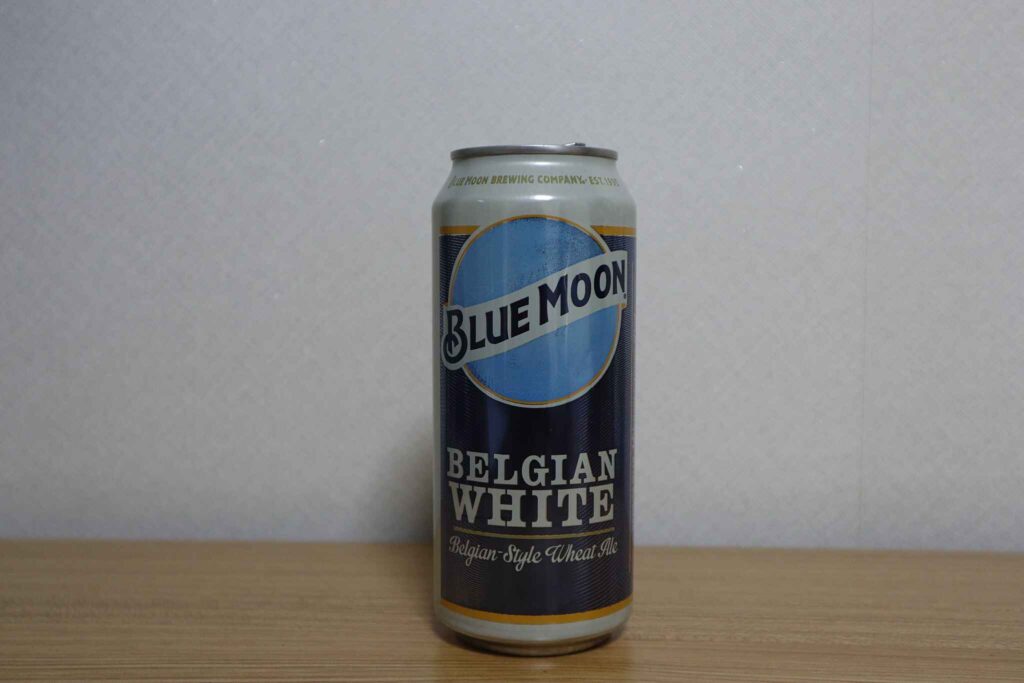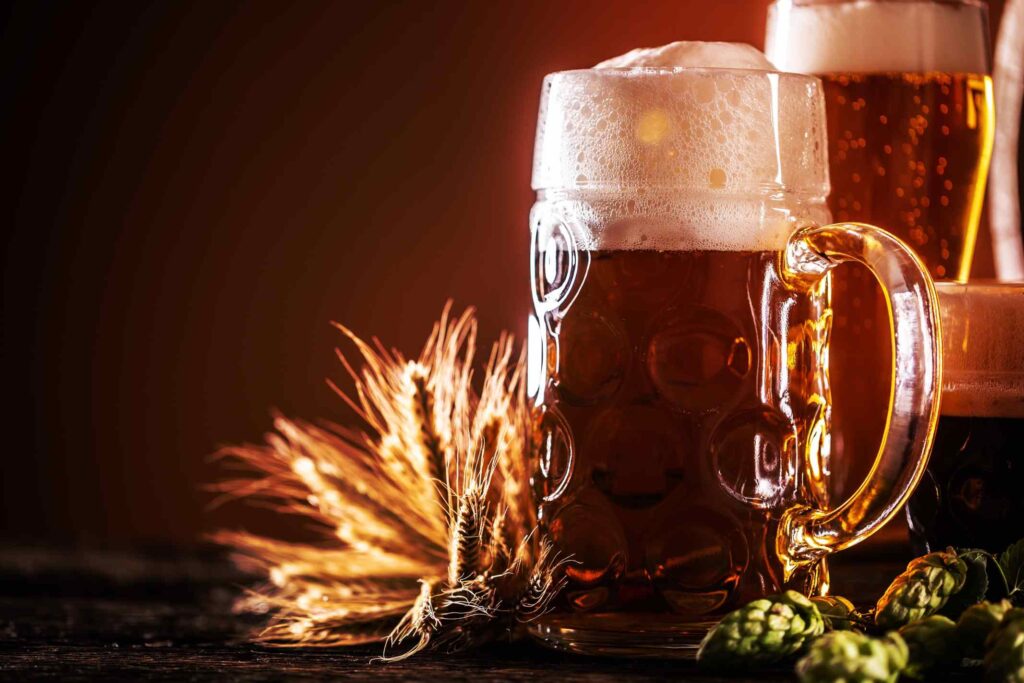What is Wheat Beer? In this article, you will learn interesting facts about Wheat Beer.
Wheat beer, originating in Bavaria, holds a special place among the vast world of beers due to its unique brewing process and refreshing taste. A top-fermented ale, this beer category stands out for its usage of at least 30% wheat in place of more traditional grains like malted barley. As a result, wheat beer lovers can enjoy a wide variety of styles, with German hefeweizen being the most popular and globally recognized.
While the overall brewing process remains the same for all beers, including hops, yeast, water, and grain, the distinct combination of ingredients and techniques used in crafting wheat beers produces flavors and textures not commonly found in other brews. For instance, German Weißbier, often referred to as “white beer”, requires a minimum of 52% wheat-to-barley malt ratio to create its signature light color and delicate taste. On the other hand, Belgian Witbier utilizes additional flavorings such as coriander and orange peel to create a unique, complex palate.
As you explore the intricacies of wheat beer, discovering the diverse styles and flavors available can be an exciting journey for beer enthusiasts. Whether you prefer the smooth, yeasty notes of a classic hefeweizen or the zest of a witbier packed with spices, there is undoubtedly a wheat beer suited to your preferences, offering a delightful drinking experience.
Table of Contents
History of Wheat Beer

Wheat beer has a long and fascinating history that spans different countries and cultures. The first traces of wheat beer can be traced back to ancient Egypt, where it was brewed with wheat instead of barley due to the abundance of the former grain. Wheat beer’s storied past continued to evolve as it made its way to Europe, where it became especially popular in countries like Germany, Belgium, and the Netherlands.
In Germany, wheat beer has a deep-rooted history in Bavaria, a southern state with a thriving beer culture. Bavarian law has regulated the brewing of wheat beer since the 16th century, which helped define the characteristics of the beverage and ensured its popularity. The most famous German wheat beer style is hefeweizen, which is brewed using at least 30 percent wheat and top-fermented ale yeast. This type of beer showcases a refreshing, effervescent, and hazy profile, which has made it a beloved classic around the world.
Across the border in Belgium, another style of wheat beer called witbier emerged. Witbier, also known as white beer, bière blanche, or simply witte, is a top-fermented beer that blends barley and wheat during the brewing process. The hazy, white appearance of the beer comes from the suspended yeast and wheat proteins that result from the brewing process. The Belgian witbier is often infused with spices, such as coriander and orange peel, which adds a unique depth of flavor to the beer.
Overall, the history of wheat beer is a testament to its enduring popularity and the rich brewing cultures of various countries. As the evolution of this beer style continues, drinkers around the globe can appreciate the diverse flavors and traditions that have shaped wheat beer through the years.
Varieties and Styles

Wheat beer is a versatile and popular category of beer with several distinct styles. In this section, we will explore the various types of wheat beer, including German Hefeweizen, Belgian Witbier, American Wheat Beer, Berliner Weisse, and Dunkelweizen.
German Hefeweizen
Hefeweizen is a traditional German wheat beer, known for its cloudy appearance and refreshing taste. This style is characterized by a high percentage of wheat in its brewing process, typically using at least 50% wheat malt alongside malted barley. Hefeweizen is often unfiltered, which contributes to its signature cloudiness. Key flavor notes in this style include hints of banana and clove, achieved through specific yeast strains used during fermentation.
Belgian Witbier
Belgian Witbier, also known as bière blanche or weissbier, is a light and slightly hazy ale brewed with a mixture of malted and unmalted wheat. It features a spiced profile, commonly including additions of coriander and orange peel during the brewing process. Some popular examples of Belgian Witbier are Hoegaarden, Allagash White, and Blue Moon Belgian White. This style is known for its citrusy and slightly spicy taste, making it a refreshing choice especially during warmer months.
American Wheat Beer
American Wheat Beer is a more approachable and versatile style, often lighter in taste compared to its German and Belgian counterparts. This category usually incorporates a significant portion of wheat malt, lending a lighter and distinctively smooth mouthfeel. American Wheat Beers can be brewed with or without additional spices, providing a variety of flavor profiles to suit different palates.
Berliner Weisse
Berliner Weisse is a sour, tart wheat beer originating from Germany. This style is known for its low alcohol content and crisp, refreshing flavor. The sourness is achieved through the use of Lactobacillus bacteria during fermentation, which produces lactic acid, giving the beer its characteristic acidity. Berliner Weisse is often served with flavored syrups, such as raspberry or woodruff, to balance its tartness.
Dunkelweizen
Dunkelweizen is a dark, unfiltered wheat beer, combining the fruity and spicy flavors of Hefeweizen with the rich, malty notes of darker beers. This style uses roasted malts to achieve its characteristic amber-brown color and depth of flavor. Dunkelweizen typically features notes of banana, clove, and caramel, making it a more complex and robust choice within the wheat beer category.
Ingredients and Brewing Process
Grains and Yeast
Wheat beer is a unique and refreshing beverage made by blending wheat malt with barley in the brewing process. Typically, at least 30 percent of the grain bill consists of wheat, providing a distinct flavor and mouthfeel to the final product. Wheat beers are often top-fermented, using ale yeast strains that contribute fruity and spicy esters to the beer’s profile, such as banana and clove notes found in a traditional German Hefeweizen1.
Hops and Spices
Wheat beers are not as hop-forward as other styles like pilsners or lagers. For instance, a German Hefeweizen recipe might use 1 oz of Hallertau hop pellets for bittering2. In contrast, American wheat beers may incorporate a slightly higher hop presence for a bolder flavor, creating a bready, grainy, and light hoppy profile3.
Sometimes, wheat beers are spiced to create additional complexity and depth of flavor. A popular example of spiced wheat beer is the Belgian Witbier, which typically includes additions of coriander and curacao orange peel. Another spiced wheat beer example is the German Gose, which uses coriander and salt as adjuncts and is soured with lactic acid4.
Water and the Brewing Process
During the brewing process, the type of water used is key to achieving the desired profile in wheat beers. Traditional German-style wheat beers can have varying water profiles, from soft to moderately hard5. It’s essential to maintain an optimal mash pH range of 5.2 to 5.6, which can be adjusted with the appropriate mineral additions, such as chloride for enhancing the beer’s texture5.
The process of brewing wheat beer is similar to other ale styles, with a mash temperature of around 152°F (65°C) for 60 minutes3. After mashing, the wort is boiled for 60 minutes before hop additions and fermentation. To keep fermentation clean and avoid off-flavors, fermentation temperatures should be kept relatively low, around 60°F (16°C), and the beer should be given ample time to ferment, allowing at least 2 to 3 weeks for primary fermentation4.
Famous Wheat Beers and Breweries
Hoegaarden White Ale
Hoegaarden White Ale is a top-fermented Belgian wheat beer, also known as a witbier, brewed in the town of Hoegaarden, Belgium. This beer is famous for its cloudy appearance due to suspended yeast and wheat protein particles. Its unique flavor profile includes hints of coriander and orange peel, giving it a refreshing citrusy taste.
Samuel Adams Summer Ale
Samuel Adams Summer Ale is an American wheat ale produced by the Boston Beer Company. This craft beer is known for its crisp and refreshing taste that’s perfect for warm weather. It is brewed using malted wheat and barley, balanced with a blend of Hallertau Mittelfrueh and Saaz Noble hops. Notes of citrus and a hint of spice make this wheat beer a summer favorite.
Shock Top Belgian White
Shock Top Belgian White is a Belgian-style wheat ale brewed by Anheuser-Busch InBev, the same company responsible for the popular Blue Moon Belgian White. Shock Top is brewed with orange, lemon, and lime peels, and coriander, giving it a zesty, tangy flavor and a slightly sweet aroma. Its unfiltered appearance and cloudy, golden hue add to its unique character.
Sierra Nevada Kellerweis
Sierra Nevada Kellerweis is a Bavarian-style Hefeweizen crafted by the Sierra Nevada Brewing Company, a renowned American craft brewery. The beer is brewed with a blend of wheat and barley, and it features the traditional German yeast strain that imparts distinctive banana and clove flavors. The Kellerweis is known for its slightly hazy appearance and smooth, creamy mouthfeel.
Each of these famous wheat beers has its own unique characteristics that make them stand out in the vast world of breweries and craft beers. Their refreshing and distinctive flavors, along with their rich brewing histories, have earned them a special place in the hearts of beer enthusiasts worldwide.
Flavor Profile and Pairings

Aroma and Flavor
Wheat beer is a top-fermented beer known for its unique flavor profile that often includes fruity and spicy notes. Fruity flavors can range from banana-like to citrusy, with some brews even exhibiting a faint hint of bubble gum or vanilla. The use of high-protein grains like wheat and oats contributes to the beer’s distinct haziness and highly carbonated mouthfeel, making it a refreshing choice for many drinkers.
Some popular examples of wheat beer include American wheat and gose from the United States, with California being a notable producer. Top German wheat beers like Franziskaner and Weihenstephaner are renowned for their balance of banana and clove flavors. Belgian lambic, on the other hand, showcases a more complex and medicinal character due to spontaneous fermentation and the use of wild yeast and bacteria.
Food Pairings
The versatile flavor profile of wheat beer allows it to pair well with a variety of dishes. To enhance the fruity flavor, try serving wheat beer with an orange slice or a side of banana pudding. The bright and effervescent characteristics make it an excellent companion for lighter dishes like salads and seafood.
When it comes to more robust pairings, wheat beer complements spicy dishes, cutting through the heat and cleansing the palate. This makes it a great option for pairing with Asian and Indian cuisines. Furthermore, the tangy and slightly sour notes in gose and Belgian lambic varieties provide a contrast for rich and creamy dishes like Brie cheese.
In summary, wheat beer’s diverse flavor profile offers numerous pairing possibilities. Experimenting with different combinations can help you find the perfect match to elevate your drinking and dining experience.



